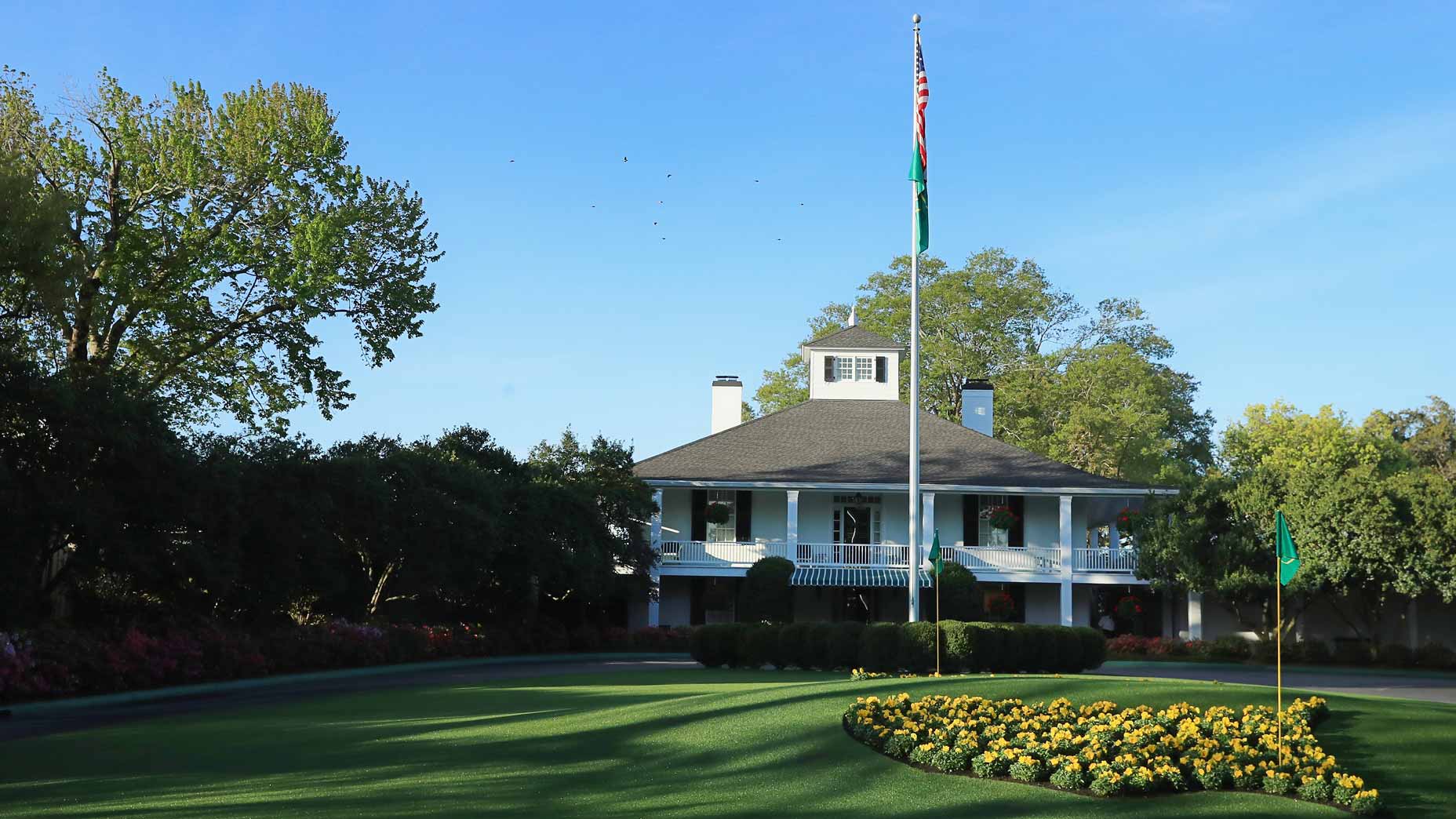
Looking for tips on how to manage fast greens like Augusta National’s? These tips will help.
Getty Images
Playing on fast greens can be both fun and challenging, but it takes skill to learn how to manage fast putting surfaces.
Augusta National, the site of this weekend’s Masters, is known for its legendary fast greens, which make it tough for even the world’s best golfers to figure out the right pace of their putts. While difficult, there are ways to see success on speedy greens — it just requires a bit of technique, the right equipment, and some focused practice.
So for those amateurs looking for some pointers on managing fast greens, follow the tips below.
1. Your technique matters
All shots in golf require good technique, but being fundamentally sound on really fast greens is a must if you have any chance at playing them successfully.
This means getting a good setup, focusing on your posture and allowing your shoulder path to be a natural motion all the way through your swing.
Practicing with alignment and setup aids — like a simple putting mirror — can be helpful to improve technique and build your confidence.
2. Manage your expectations
Every golfer is eager to prove themselves on the putting surface — but it’s so important to manage your expectations when faced with lightning-fast greens.
This means changing your mindset from trying to be aggressive and making your putt, to simply just roll your first putt close enough to make the next putt easier for yourself. Just making this easy change will have the golf ball slowing down around the hole — which makes it more likely to fall in the side of the cup.
Remember, even the best players in the world struggle on these types of surfaces, so don’t think you’ve mastered them after a few solid holes.
3. Always play for more break — even on short putts
On lightning-fast greens, putts will break more, so your aiming needs to be adjusted to accommodate for more break — even on shorter putts.
Since the grass is shorter and the surface is smoother, there is less friction to hold the ball, meaning it will curve more. Also, because your shot will be rolling slower, the time the ball has to break will increase.
This is where amateurs need to understand that they may need to aim the putter face outside of the cup — which takes time to learn.
One of my favorite green reading tools is Green Books by Golflogix. If you’re not great at reading your own greens, I highly recommend trying this.
4. Respect the downhill
Respect the downhill by keeping a throttle on your backstroke length, as well as your putter speed. Your stroke should be small enough to be slow. On the fastest of putts, it may feel like you just touch the ball to get it rolling — which is a learned skill that comes with lots of practice on lightning-fast greens.
5. Approach from below the pin
Since downhill putts can be a challenge, your course management needs to be a bit better than normal. This means trying to leave your approach shot on the lower side of the pin, leaving you with an uphill putt.
This requires some planning ahead of time, but the faster the greens are, the more important it is to consider your target as you approach the green. In fact, sometimes it may even be better to be just off the green than above the pin.
6. Have a smooth stroke
There shouldn’t be any jerky motions or acceleration of the forward stroke. This can cause your putt to get away from you, often causing it to roll past the hole.
Good putters on fast greens like Augusta National’s have a silky smooth stroke that’s both even and calm. This allows the size of the stroke to control the distance, leading to better results.
7. Use a heavier putter
A heavier putter is best for many players on fast greens. That’s because they’re easier to swing slower — and this is exactly what you want when looking to limit speed and power at impact.
My Ping PLD putter was fit perfectly for me, and it’s relatively heavy. Being able to feel the head throughout my entire stroke helps me manage my speed; even on the fastest of greens.
8. Even out your rhythm and grip pressure
Being able to stay even during your putting stroke is most effectively regulated by your grip pressure. So be sure to have a consistent grip pressure from start to finish while putting. This consistent degree of holding will help your stroke size and rhythm, making it easier to control the distance of your putts.
9. Have a smaller backstroke
Smaller backstrokes will deliver less speed and power at impact, helping the ball roll shorter distances — even on Augusta-like fast greens.
Really short putts may only need one to two inches of backstroke. Many amateur players aren’t accustomed to that, so be sure to hit the practice green before each round to get a feel for this before playing a round on really fast greens.
10. Hold lower when necessary
When tasked with a really fast putt, you may need to deviate away from how you typically hold the club. This means adjusting your grip and placing your hands very low on the putter — and, in some cases, off of the grip and onto the shaft.
When you hold the putter this low, you shorten the lever, naturally delivering less power to the golf ball.
It may feel odd at first, but it’s worth trying when you have a short, fast, downhill putt that requires extra special touch.
Having the skill to manage fast greens will be the difference between lower scores and higher scores. So having good technique and a game plan is essential to play these fun (and always challenging) surfaces.







